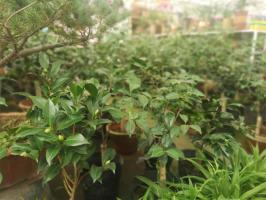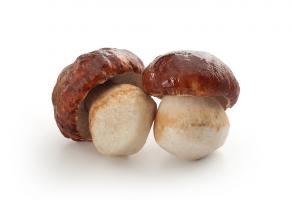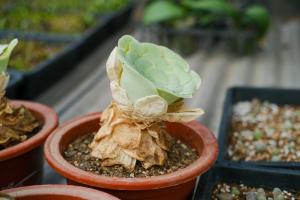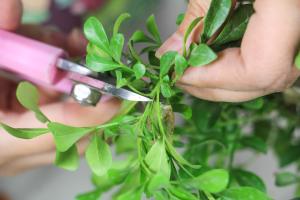Can You Plant Dwarf Fruit Trees in the Ground?
Are you thinking about planting fruit trees in your backyard? If so, you might be wondering whether it's possible to plant dwarf fruit trees in the ground. The answer is yes, you can plant dwarf fruit trees in your backyard, but there are a few important things you need to consider. This article will explore some of the benefits and drawbacks of planting dwarf fruit trees in the ground, as well as some tips for getting the best results.
The Benefits of Planting Dwarf Fruit Trees in the Ground
One of the main benefits of planting dwarf fruit trees in the ground is their smaller size. Unlike regular fruit trees, which can grow to be quite large, dwarf fruit trees are designed to stay small and compact. This makes them a great choice for those who have limited space in their backyard or who want to grow fruit trees in containers. Dwarf fruit trees are also more manageable and easier to care for than their larger counterparts, which means you'll be able to enjoy fresh fruit without any of the hassle.
In addition, planting dwarf fruit trees in the ground can also provide a number of other benefits. For example, fruit trees are known for their ability to attract beneficial insects, such as bees and butterflies, which can help to pollinate your garden and keep your plants healthy. Fruit trees can also provide shade and shelter for other plants in your garden, which can help to create a more diverse and vibrant ecosystem.
The Drawbacks of Planting Dwarf Fruit Trees in the Ground
While there are many benefits to planting dwarf fruit trees in the ground, there are also some potential drawbacks that you need to be aware of. One of the main disadvantages of dwarf fruit trees is that they can be more susceptible to disease and pests than regular fruit trees. This is because their smaller size makes them more vulnerable to attacks from insects and other pests, which can cause significant damage to your plants.
In addition, dwarf fruit trees may also produce smaller yields than regular fruit trees, which can be a drawback if you're hoping to grow a large amount of fruit. However, this can be offset by the fact that dwarf fruit trees are often more prolific and may produce fruit more often than their larger counterparts.
Tips for Planting Dwarf Fruit Trees
If you're planning to plant dwarf fruit trees in your backyard, there are a few tips you should keep in mind to ensure success. First, it's important to choose a suitable location for your trees. Dwarf fruit trees need plenty of sunshine and well-drained soil, so make sure you choose a spot that receives at least six hours of sunlight per day and has good drainage.
You should also make sure to plant your trees at the right time of year. In general, it's best to plant dwarf fruit trees in the fall or early spring, when the soil is moist and temperatures are mild. This will give your trees the best chance of establishing themselves before the hot summer months.
Finally, it's important to follow good care practices for your trees, including regular watering, fertilization, and pruning. This will help to ensure that your trees stay healthy and produce plenty of delicious fruit each year.
Conclusion
Planting dwarf fruit trees in your backyard can be a great way to enjoy fresh, delicious fruit without taking up too much space or requiring too much maintenance. However, it's important to be aware of the potential drawbacks of planting dwarf fruit trees, including their susceptibility to disease and pests. By following the tips outlined in this article and taking good care of your trees, you'll be able to enjoy fresh fruit from your backyard for years to come.

 how many times do yo...
how many times do yo... how many planted tre...
how many planted tre... how many pine trees ...
how many pine trees ... how many pecan trees...
how many pecan trees... how many plants comp...
how many plants comp... how many plants can ...
how many plants can ... how many plants and ...
how many plants and ... how many pepper plan...
how many pepper plan...































